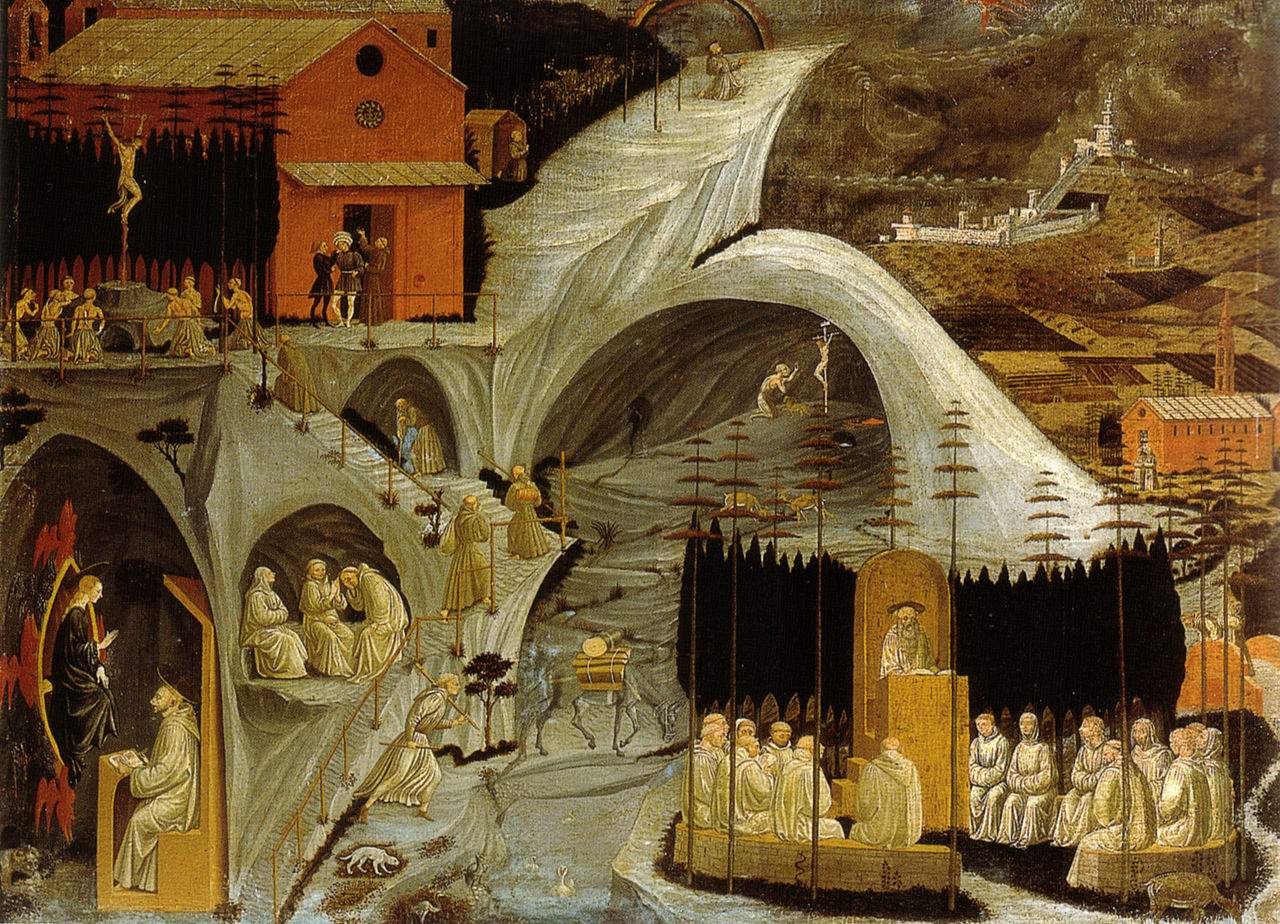Florence, a podcast is born to chronicle the masterpieces of the Accademia Gallery
The masterpieces of the Accademia Gallery in Florence are going ... on the radio. Starting Wednesday, December 16, in fact, nine works from the Florentine museum’s collection will be told in a podcast that can be listened to on the Gallery’s website. The initiative is called Radio Accademia and is the result of a collaboration between the Accademia di Belle Arti di Firenze and the Galleria dell’Accademia di Firenze, created by a group of students from the Museum Didactics course, coordinated by Professor Federica Chezzi.
The idea behind Radio Accademia is to bring the works to the public, with an entertaining narration, making them discover unpublished details and curiosities of the masterpieces narrated from time to time. The works chosen, in order of listening, are Bronzino and Alessandro Allori’sAnnunciation (1578-1579), Pontormo’s Venus and Cupid (c. 1533), Cesare Mussini’s Leonardo da Vinci, old and mortally infirm, expires in the arms of Francis I (1828), Giotto ’s Shepherd and herds (1315), Paolo Uccello’s Thebaid (c. 1460-1465), Sandro Botticelli ’s Madonna of the Sea (c. 1477), Friar Bartholomew’s Prophet Job (1514-1516) and Prophet Isaiah (1514-1516), and the Prisoners (c. 1513 and 1525-1530).
Born precisely in the months of the so-called lockdown as the conclusion of an educational course dedicated to artistic communication, Radio Academy set itself the goal from the outset to stimulate the creative potential of the students, challenged by isolation and suddenly no longer in-presence teaching, and at the same time to offer them a concrete field of application. The result was a plural work that saw the Academy’s students put themselves to the test on several levels: from the writing of texts and dialogues to the recording and soundtracking of audio tracks, taking advantage of the scientific input of museum officials. The recordings, all “home made,” were made by the students with their cell phones, using as improvised studios the most disparate corners of their homes: from closets to closets, and some, in search of the best sound, even recorded speech under the covers. When the work was completed, a sound technician took care of leveling and cleaning up the audio of the nine stories, but, says Professor Chezzi, “it was precisely because of the sound characteristic of the recordings that together with Dr. Hollberg we came up with the name ’Radio Academy’: the sound, in fact, reminded us a bit of that of radio broadcasts of the past, of the first free radios.” A name that is also meant to be the meeting point and synthesis of the two institutions: the Academy of Fine Arts and the Academy Gallery, united by a common origin and, in the present, by a strong collaborative relationship.
“Radio Accademia was born together with Claudio Rocca, director of the Academy of Fine Arts. A project involving two historically close institutions,” says Cecilie Hollberg, director of the Accademia Gallery. “A project that has young people at the forefront, students who have chosen to narrate some of the paintings preserved in the museum in the form of a narrative. I was very impressed by the commitment and the result, nine small stories, which you will have a chance to hear, that give us a different, fresh and original look at these works. This work also confirms the curiosity that young people show toward the Accademia Gallery: a recent survey done on the public of visitors in these last summer months found precisely how a very high percentage of the average age, 38 percent, was under 24.”
“Since the inauguration three years ago of the Department of Communication and Art Education we have been working to create new possibilities in the artistic field for our students,” says Claudio Rocca, Director of the Academy of Fine Arts. “Radio Accademia confirms the experimental vocation of the Florence Academy of Fine Arts because of the innovative and creative nature of the project, capable of stimulating and putting to use the skills of the students. The possibility for students to measure themselves with an extraordinary museum such as the Accademia Gallery certainly represented an exceptional opportunity, reaffirming, moreover, the importance and fruitfulness of a constant collaboration between institutions. Proposing a reading of the works of art through the unusual and original gaze of the students, trained in this role of ’art speaker’ by our Museum Didactics course and assisted by the Gallery officials, helps to bring the very young public closer to art, following the example of the great international institutions. I thank the teachers who led it and the students of my Academy for showing passion, energy and commitment, even at this particularly difficult time.”
The first episodes of the Radio Accademia podcast were created by students in the Museum Teaching course: Caterina Cecioni, Beatrice Cervi, Ginevra Clementi, Sonia Delle Cese, Laura Fidanzi, Alessia Fois, Giulia Girolami, Rachele Persello, Beatrice Prenna, Grazia Sirianni, Andrea Toschi, Leila Vignozzi, Romario Bardhoshi, Giovanni Bonechi, Margherita Bonvino and Marco Di Coscio. Sound design is by Saverio Damiani.
Pictured: Paolo Uccello, Thebaid (c. 1460-1465; tempera on canvas, 83 x 118 cm; Florence, Galleria dell’Accademia)
 |
| Florence, a podcast is born to chronicle the masterpieces of the Accademia Gallery |
Warning: the translation into English of the original Italian article was created using automatic tools. We undertake to review all articles, but we do not guarantee the total absence of inaccuracies in the translation due to the program. You can find the original by clicking on the ITA button. If you find any mistake,please contact us.



























